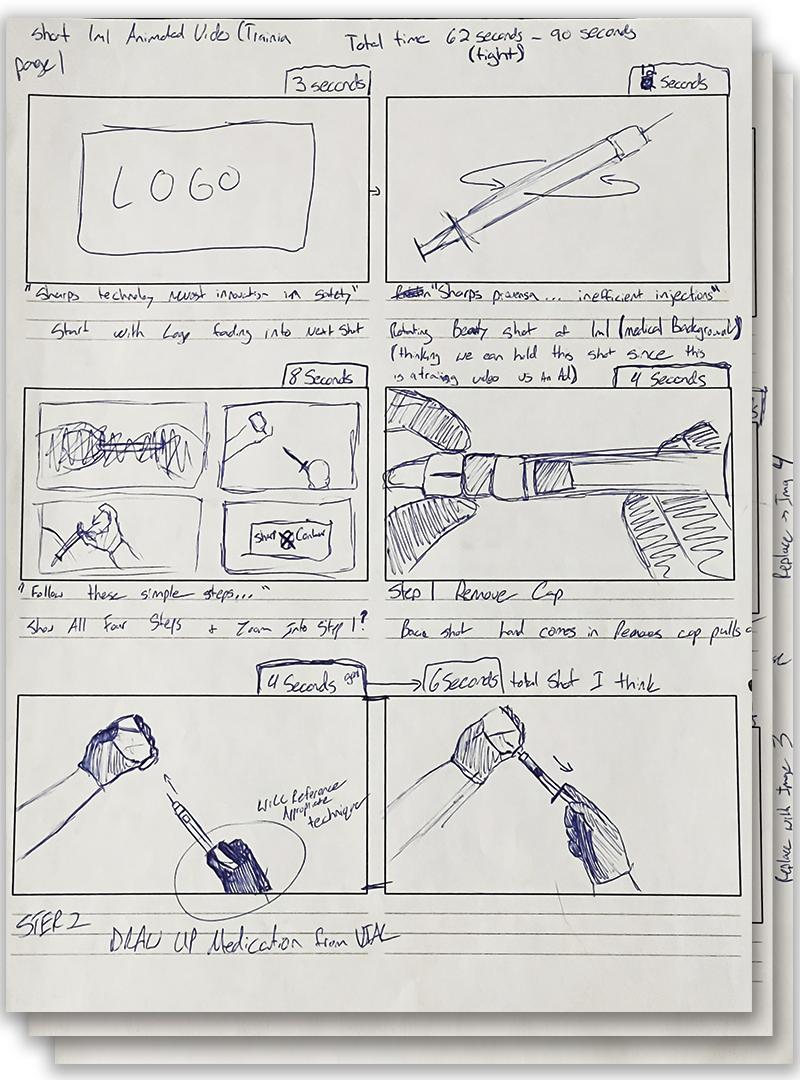Sharps Technology
How To Animation
Scroll Down to see the process.
Design Brief
Sharps Technology, Inc. is a medical device company addressing global issues while engineering a safer future for healthcare providers and people everywhere through compassionate innovation.
The goal of this project was to showcase Sharps’s Provensa technology. Their technology is a Smart Safety Syringe that is aiming to stop the two million potentially infectious needlestick injuries that occur each year.
A problem with most safety syringes is that they take an extra step to activate or disrupt the injection process. Sharps Provensa activates automatically, with no changes required by the healthcare worker. As they say “simply give the injection.
Sharps Technology’s had two major goals with this product:
Mention how their technology is more efficient saving money by less wasted medicine per dose.
Showcasing that their safety features were passive and work automatically with no special training required.
With these two goals in mind and having previously hired RedChip (my current employer) for similar animation projects we quickly got to work.
The Process
I was involved in almost every role of this project. The only part I wasn't responsible for was the script. The client had a good idea of how they wanted the script, so after suggesting a few revisions that would help the video flow the client approved the script and we got to work.
I started by creating a few thumbnail sketches for all the different scenes the video would have. This was a great way to get ideas down quickly and helped both the client and me have a better understanding of where the project was going. After sending over the first set of thumbnails and reviewing them with the client we received feedback that one of the techniques shown for removing the cap wasn't fully traditional and we adjusted the sketches appropriately. It was important for these decisions to be made early on in the process where changes are cheaper and faster. It's always best to have your animations and scenes locked down on paper before moving toward actual 3D renders.
After receiving final approval on the sketches I put together an animatic to understand the pacing of each scene. So when moving into the 3D scenes I Had a clear picture of what was necessary for each animation.
After receiving approval on the animatic I quickly got to work implanting each scene into a 3D animation, before exporting and completing a final render, I utilized software renders so that if the client had any feedback for the animation or the look and feel of the scene it was easier to change as opposed to rerendering some of these hefty scenes( some scenes took up to 16-20 hours to render) this helped in the revision process because I was able to make changes before wasting multiple hours, for instance, I originally was requested to have purple medical gloves which were later changed to a blue color. Now sometimes clients request changes after renders have occurred but providing these software renders usually helps avoid the majority of wasted time and money.
Sharps Training Video Animatic
After receiving all feedback we finally received approval for the project. I was told by the client that this video was used as a tool to secure further sales and resulted in them continuing with RedChip as a client, we have produced multiple other products for sharps as well as assisted in their IPO which the video below played a role in.
For this project, I was responsible for all aspects of production other than writing. I was in charge of pre-production including the thumbnail sketches, modeling, animating, and lighting as well as developing the materials for each 3D scene used in the project, as well as the final edit.

